 W
WThe island of Great Britain, along with the rest of the archipelago known as the British Isles, has a largely temperate climate. It contains a relatively small fraction of the world's wildlife. The biota was severely diminished in the last Ice Age, and shortly thereafter was separated from the continent by the English Channel's formation. Since then, humans have hunted the most dangerous forms to extinction, though domesticated forms such as the dog and the pig remain. The wild boar has subsequently been reintroduced as a meat animal.
 W
WThe island of Great Britain, along with the rest of the archipelago known as the British Isles, has a largely temperate climate. It contains a relatively small fraction of the world's wildlife. The biota was severely diminished in the last Ice Age, and shortly thereafter was separated from the continent by the English Channel's formation. Since then, humans have hunted the most dangerous forms to extinction, though domesticated forms such as the dog and the pig remain. The wild boar has subsequently been reintroduced as a meat animal.
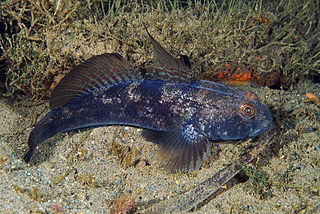 W
WThe black goby is a species of ray-finned fish found in the Eastern Atlantic and Mediterranean Sea and Black Sea. It inhabits estuaries, lagoons, and inshore water over seagrass and algae. It feeds on a variety of invertebrates and sometimes small fish. This species can also be found in the aquarium trade.
 W
WAround 65 species of crab occur in the waters of the British Isles. All are marine, with the exception of the introduced Chinese mitten crab, Eriocheir sinensis, which occurs in fresh and brackish water. They range in size from the deep-water species Paromola cuvieri, which can reach a claw span of 1.2 metres, to the pea crab, which is only 4 mm (0.16 in) wide and lives inside mussel shells.
 W
WThe white-beaked dolphin is a marine mammal belonging to the family Delphinidae in the suborder Odontoceti.
 W
WThe Atlantic white-sided dolphin is a distinctively coloured dolphin found in the cool to temperate waters of the North Atlantic Ocean.
 W
WThis list of fish in the River Trent is a list of fish species that have been recorded from the River Trent, a major river in England that starts in Staffordshire, flows through the Midlands, and joins the River Ouse to form the Humber Estuary.
 W
WThe greater horseshoe bat is an insectivorous bat of the genus Rhinolophus. Its distribution covers Europe, Northern Africa, Central Asia and Eastern Asia. It is the largest of the horseshoe bats in Europe and is thus easily distinguished from other species. The species is sedentary, typically travelling up to 30 kilometres (19 mi) between the winter and summer roosts, with the longest recorded movement being 180 km (110 mi). The frequencies used by this bat species for echolocation lie between 69–83 kHz, have most energy at 81 kHz and have an average duration of 37.4 ms.
 W
WThe tub gurnard, Chelidonichthys lucerna is a species of bottom-dwelling coastal fish with a spiny armored head and fingerlike pectoral fins used for crawling along the sea bottom. The tub gurnard is a reddish fish with blue pectoral fins.
 W
WThe Atlantic halibut is a flatfish of the family Pleuronectidae. They are demersal fish living on or near sand, gravel or clay bottoms at depths of between 50 and 2,000 m. The halibut is among the largest teleost (bony) fish in the world, and is an endangered species due to a slow rate of growth and previous overfishing. Halibut are strong swimmers and are able to migrate long distances. Halibut size is not age-specific, but rather tends to follow a cycle related to halibut abundance.
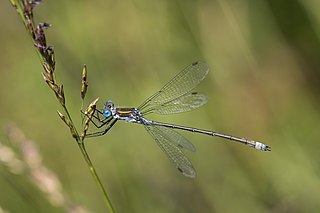 W
WLestes sponsa, is a damselfly, with a wide Palaearctic distribution. It is known commonly as the emerald damselfly or common spreadwing. Both males and females have a metallic green colour and when resting its wings are usually half opened.
 W
WMountain and moorland ponies form a group of several breeds of ponies and small horses native to the British Isles. Many of these breeds are derived from semiferal ponies kept on moorland or heathland, and some of them still live in this way, as well as being kept as fully domesticated horses for riding, driving, and other draught work, or for horse showing.
 W
WThe lesser pipefish or Nilsson's pipefish is a pipefish similar to the greater pipefish, but with no crest above the head. Usually it reaches up to 17 centimetres (6.7 in) in length, maximally 18 centimetres (7.1 in), although in South Wales they are usually not more than 10 to 13 centimetres long. They have a light to dark green-brown colour with bar-like markings on the sides. Lesser pipefish are found all around the British Isles and as far as the French coast, although they have now been recorded in the Mediterranean Sea.
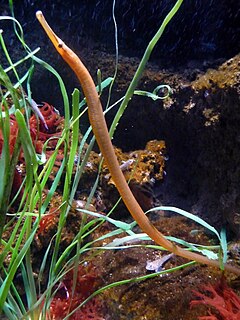 W
WThe snake pipefish is a species of pipefish, from the family Syngnathidae, native to the northeastern Atlantic Ocean where they are generally found amongst algae close in to shore. It is the largest species of pipefish recorded in European waters and has spread into arctic waters in the early 2000s.
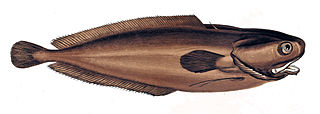 W
WThe tadpole fish is a species of Gadidae fish native to the northeast Atlantic Ocean around the coasts of France, Ireland, and the United Kingdom and the North Sea. This species grows to a total length of 27.5 cm (10.8 in). It is of no importance to the commercial fishery industry, though it can be found in the aquarium trade and is displayed in public aquaria.
 W
WThe smalleyed ray or smalleyed skate is a species of ray in the family Rajidae, the typical rays and skates, from the eastern Atlantic Ocean where it is found in tidal, coastal waters with sandy substrates.
 W
WThe undulate ray is a species of ray and cartilaginous fish found in the Mediterranean and East Atlantic from southern Ireland and England to the Gulf of Guinea. It is found in areas with mud or sand, and may occur as deep as 200 m (660 ft), though it prefers shallower depths. It is considered endangered due to overfishing.
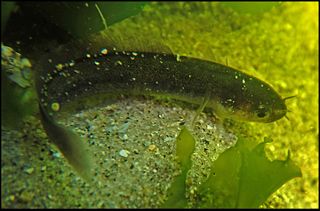 W
WThe fivebeard rockling is a coastal ray-finned fish of the family Lotidae. the lings and rocklings. It is found in the eastern Atlantic Ocean. It is not a fish of any commercial importance
 W
WThe three-bearded rockling is found in European waters from the central Norwegian coast and the Faroe Islands, through the North Sea, and around the British Isles to the region around the western Mediterranean. They can grow to a maximum length of 60 cm (2 ft). Their coloration varies from dusky to pale, with large chocolate-brown spots on the head and body, and fin coloration varies with location. They also may have xanthochromism, which is colour condition characterized by overt of yellow-organge-red pigmentaion, because of high levels of xanthophores in the skin. Three barbels, one on the bottom jaw and two on the snout, provide the fish with its common name.
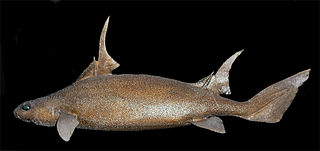 W
WThe sailfin roughshark is a species of dogfish shark in the family Oxynotidae, found in the eastern North Atlantic from Scotland to Senegal between latitudes 61°N and 11°N, at depths of between 265 and 720 m. Its length is up to 1.2 m (3.9 ft).
 W
WThe bottlenose skate, spearnose skate, or white skate is a species of skate in the family Rajidae. It is a benthic fish native to the coastal eastern Atlantic Ocean. Due to overfishing, it has been depleted or extirpated in many parts of its former range in the northeastern Atlantic and the Mediterranean Sea, and is now endangered.
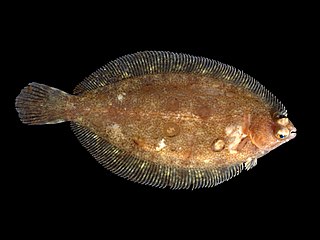 W
WThe lemon sole is a flatfish of the family Pleuronectidae. It is native to shallow seas around Northern Europe, where it lives on stony bottoms down to depths of about 200 metres (660 ft). It grows up to 65 centimetres (26 in) in length and reaches about 3 kilograms (6.6 lb) in weight.
 W
WThe sea stickleback, also known as the fifteen-spined or fifteenspine stickleback, is a species of stickleback which lives in benthopelagic and in brackish environments of the northeastern Atlantic Ocean. This species, the largest of the sticklebacks, grows to a length of 22 centimetres (8.7 in) SL. This species is the only known member of its genus Spinachia. It is of no interest as a commercial fish.
 W
WVertigo substriata is a species of minute air-breathing land snail, a terrestrial pulmonate gastropod mollusk or micromollusk in the family Vertiginidae, the whorl snails.
 W
WXylocopa violacea, the violet carpenter bee, is the common European species of carpenter bee, and one of the largest bees in Europe. It is also native to Asia.